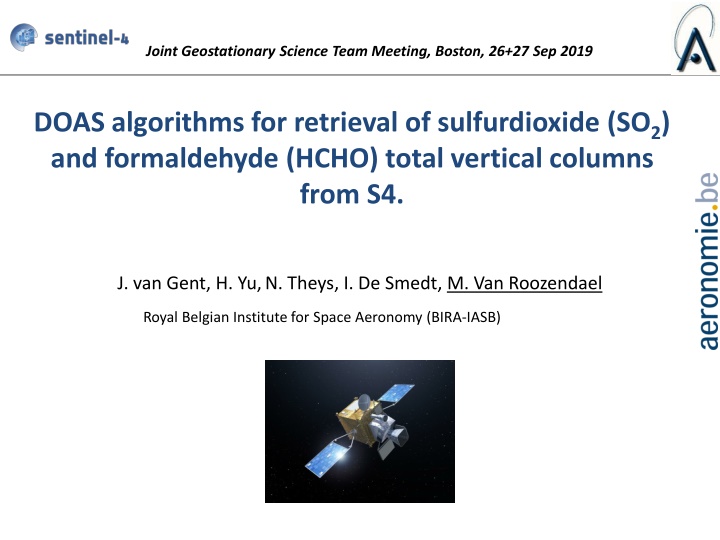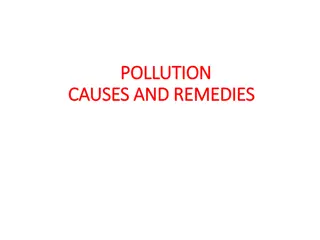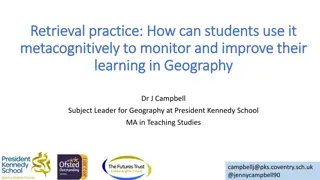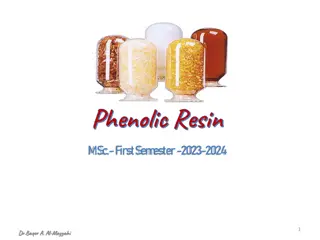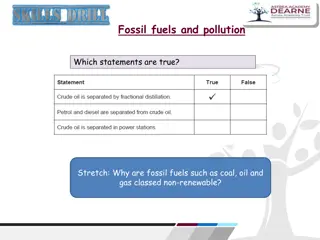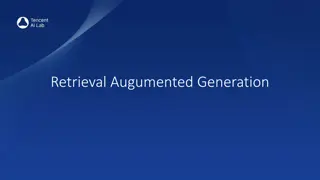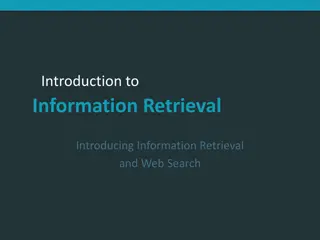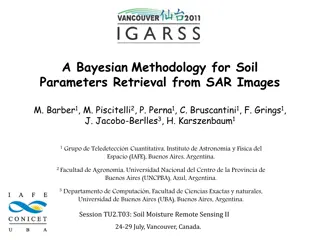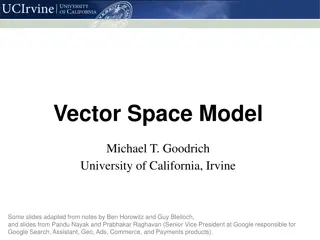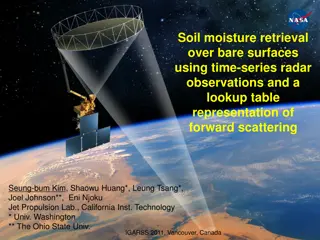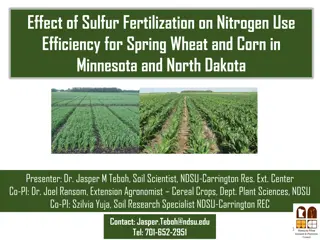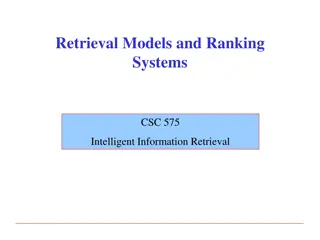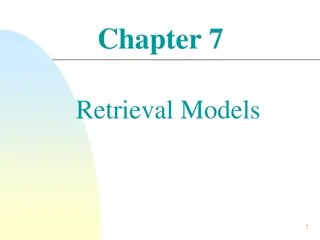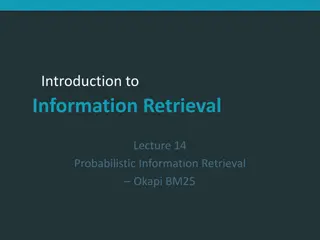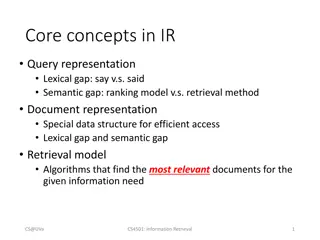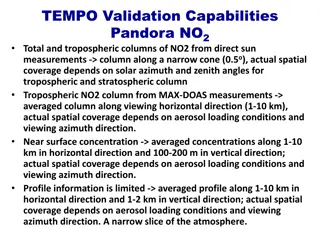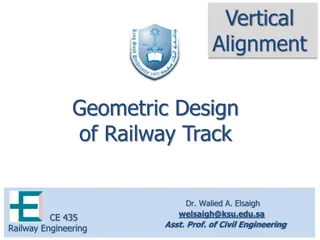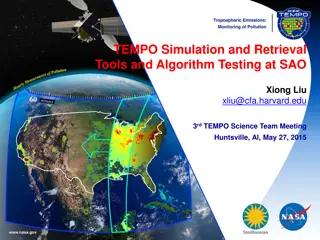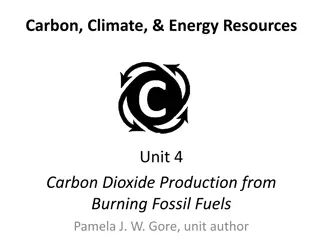DOAS Algorithms for Retrieval of Sulfur Dioxide and Formaldehyde Total Vertical Columns
"Joint Geostationary Science Team Meeting in Boston discussing the process of utilizing Differential Optical Absorption Spectroscopy (DOAS) algorithms for the retrieval of sulfur dioxide (SO2) and formaldehyde (HCHO) total vertical columns. The meeting focused on a 3-step algorithm involving spectral fitting, background correction, and air mass factor calculation. Various challenges and solutions for accurate measurements were explored, including reference spectra, background correction methods for SO2 and HCHO, and the impact of aerosols on measurements."
Download Presentation

Please find below an Image/Link to download the presentation.
The content on the website is provided AS IS for your information and personal use only. It may not be sold, licensed, or shared on other websites without obtaining consent from the author.If you encounter any issues during the download, it is possible that the publisher has removed the file from their server.
You are allowed to download the files provided on this website for personal or commercial use, subject to the condition that they are used lawfully. All files are the property of their respective owners.
The content on the website is provided AS IS for your information and personal use only. It may not be sold, licensed, or shared on other websites without obtaining consent from the author.
E N D
Presentation Transcript
Joint Geostationary Science Team Meeting, Boston, 26+27 Sep 2019 DOAS algorithms for retrieval of sulfurdioxide (SO2) and formaldehyde (HCHO) total vertical columns from S4. J. van Gent, H. Yu,N. Theys, I. De Smedt, M. Van Roozendael Royal Belgian Institute for Space Aeronomy (BIRA-IASB)
Joint Geostationary Science Team Meeting, Boston, 26+27 Sep 2019 HCHO/SO2: 3 step algorithm 1. Spectral fitting HCHO: 328.5-359 nm (BrO prefit); 328.5-346 nm) SO2: 312-326 nm; 325-335 nm; 360-390 nm 2. SCD background correction 3. AMF calculation, error analysis (+ AK), diagnosis variables (QA)
Joint Geostationary Science Team Meeting, Boston, 26+27 Sep 2019 Spectral fitting reference spectrum SO2+ HCHO Baseline: use solar irradiance; Option: reference spectrum from averaged radiance measurements over a clean area. Only in case of problems with irradiance spectrum. Reference sector needs to be a clean one. Atlantic region or other clean area. Would be interesting to test with GEMS spectra
Joint Geostationary Science Team Meeting, Boston, 26+27 Sep 2019 SCD Background correction SO2 2D detector with 551 North-South rows may cause striping pattern. Significant SO2SCD offsets are to be expected due to large viewing angles and O3 interference. Current background correction is based on parameterization of SO2 offset on O3SCD grid. Gradually refined and tested on OMI/TROPOMI data. Does not depend on reference region and can therefore be applied to S4 data. Test on GEMS data would be interesting to further refine this method. Tests show: Sulphate aerosol or volcanic ash with AOD >> 1 can cause large remaining offsets
Joint Geostationary Science Team Meeting, Boston, 26+27 Sep 2019 SCD Background correction HCHO 2D detector with 551 North-South rows may cause striping pattern. Destriping for HCHO with polar orbiters is normally remedied with the help of a reference sector (clean region over the Pacific). S4 observations area shows limited ocean surface, only observed at the end of the day. Tests on synthetic S4 spectra show that a parameterization of background SCD (ocean scene) as function of SZA is already beneficial and a method as used for SO2is expected to work for HCHO as well. Would be good to test this on a full geostationary observation domain (GEMS spectra). Presence of boundary layer aerosol often leads to over-correction (sometimes > 100%).
Joint Geostationary Science Team Meeting, Boston, 26+27 Sep 2019 BRDF effect is of minor importance in the UV due to the prominent Rayleigh scattering, however the treatment of aerosol impact might be a major challenge for S4 SO2+ HCHO Highly relevant for S4, because of large observation angles and use of UV measurements. Effect depends on AOD, vertical distribution, single-scattering albedo, geometry SO2 Volcanic eruptions: Underestimated SCDs due to absorbing aerosols (volcanic ash).
Joint Geostationary Science Team Meeting, Boston, 26+27 Sep 2019 Current information on aerosol is limited and the trace gas algorithms will probably have to rely on a combination of sources: S4 L2 SUR-GSR product delivers AOD information; one day delay and therefore offline only. S4 L2 UV aerosol index product indicates aerosol presence. S4 effective aerosol layer height (ALH, derived from O2-A band) could be used as input to correct AMFs Alternative option: exploring O2-O2light path information to define AMF correction factors. Explicit aerosol correction would require aditional information on single- scattering albedo, phase function and extinction profile (eventually constrained by ALH data). Can this be obtained from CAMS in the future?
Joint Geostationary Science Team Meeting, Boston, 26+27 Sep 2019 Challenges Alternative to current normalisation and destriping approaches Low AMF scenarios for geostationary observations (weak sensitivity) Impact of large viewing angles on sensitivity to aerosols (and surface BRDF) Diurnal changes in trace gas vertical distributions Cloud effects (shadowing, 3D effects, etc.) Impact of sun-glint scenarios Anthropogenic SO2emissions are declining over Europe
